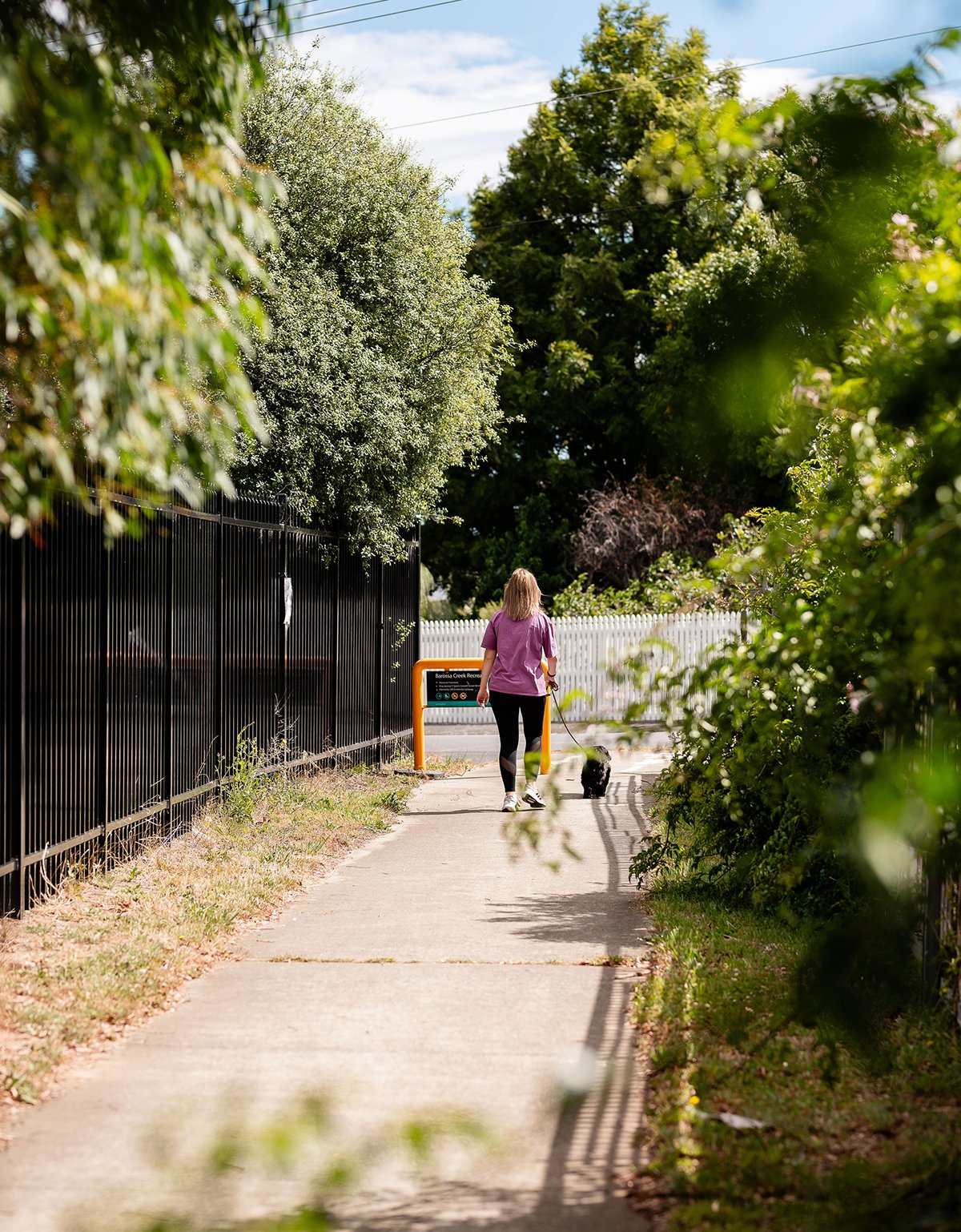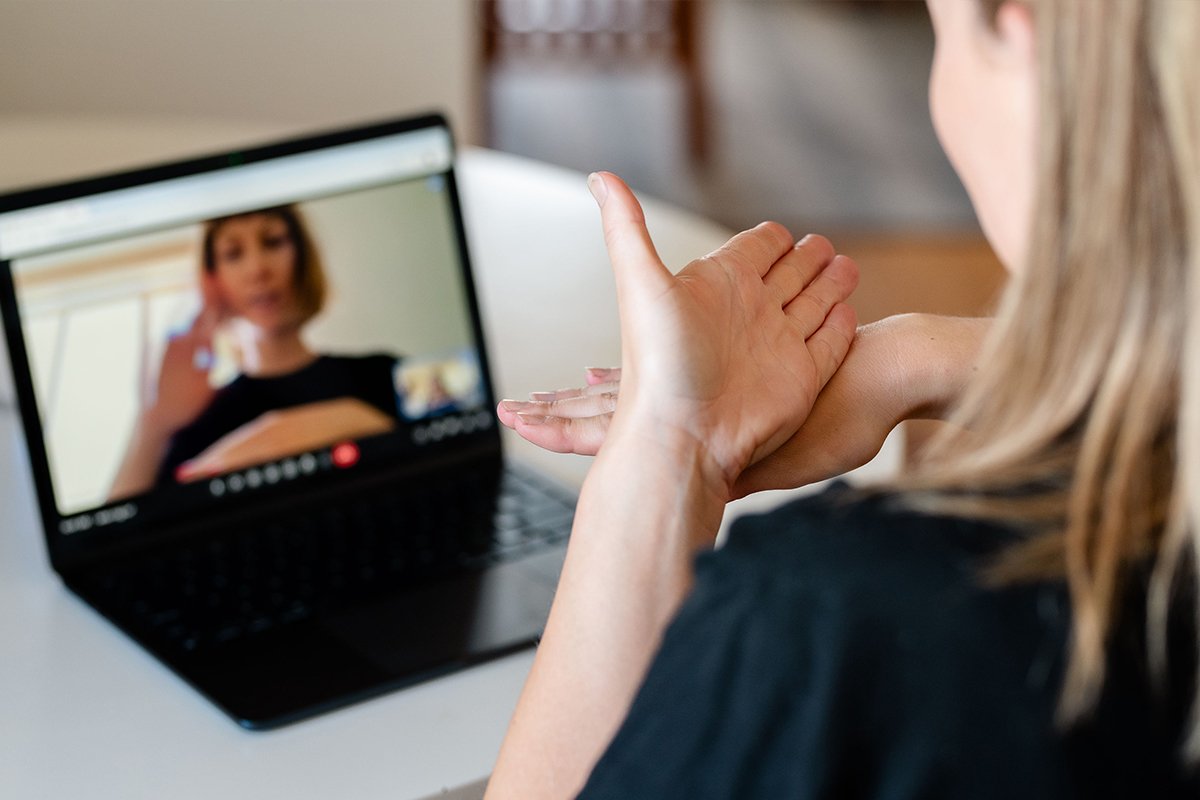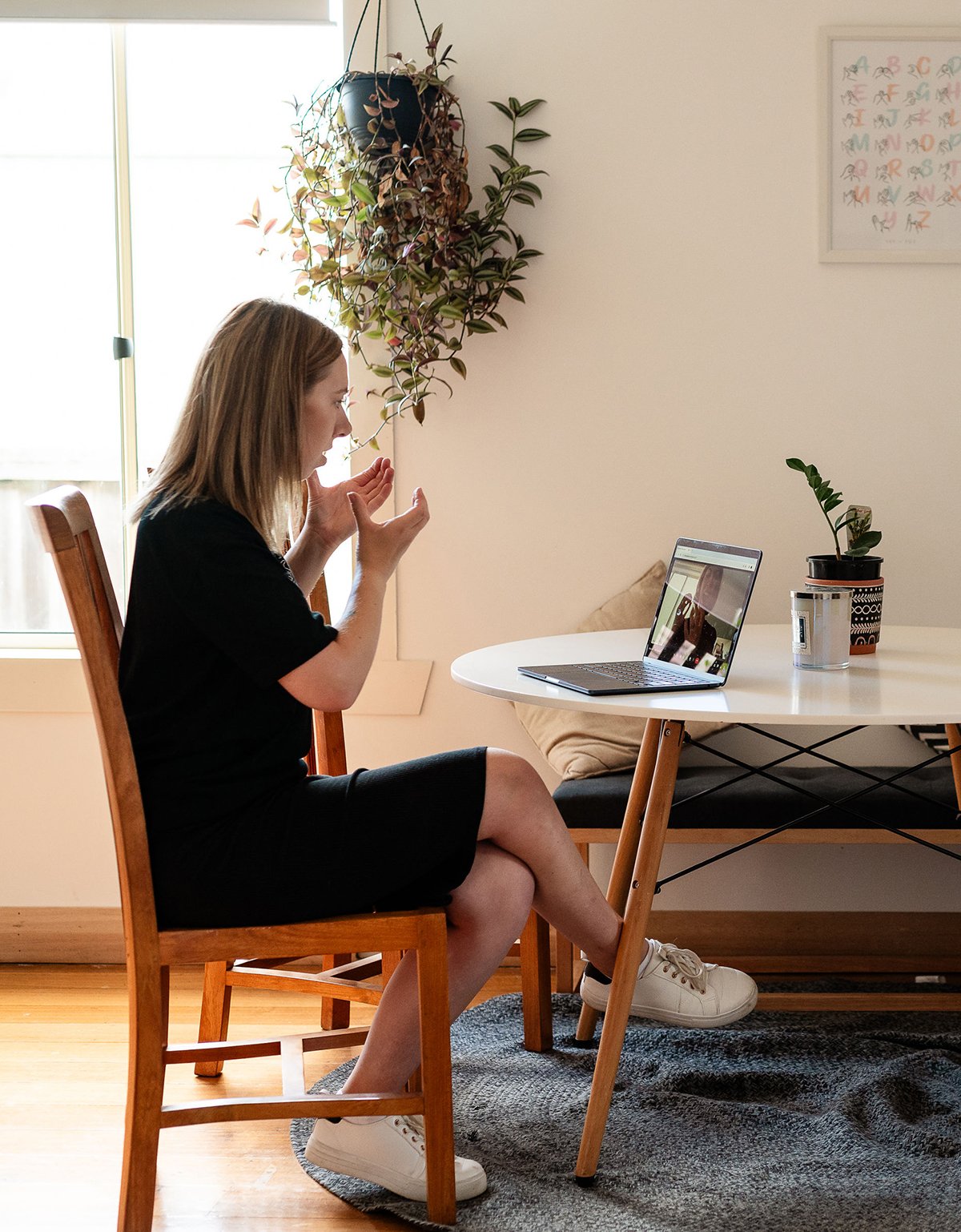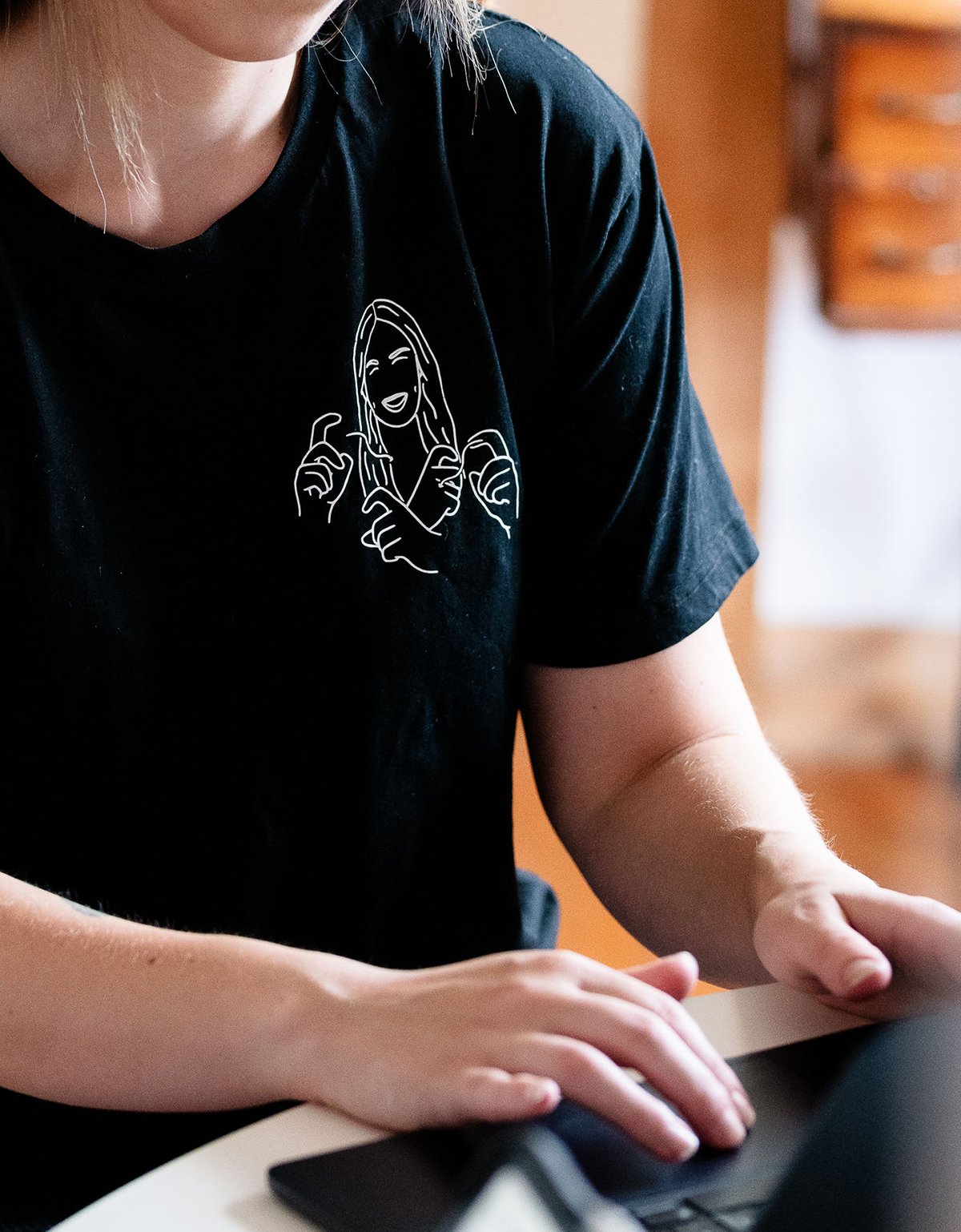Michelle Czyzowicz
"I am a strong Deaf person, and I am part of the Deaf community. It’s a big part of me; it’s 100 per cent of my life. I’m not confused about who I am. I know where I belong."
Not long ago, Michelle Czyzowicz and her friend Ben Richardson hosted a Halloween event at a Moonah art gallery.
It was a chance for people to come together for a night of fun and festivities—and to celebrate Australian Sign Language, better known as Auslan. “We decided to do a fun show about Halloween signs, drinking a glass of wine while we learnt them,” Michelle says. It brought together hearing and Deaf people, and everyone loved it. “Everyone said to us, ‘That was really fun. We want to learn more. Why don’t you start a business?’” From that night, Auslan After Dark was born.
For Michelle, creating Auslan After Dark is an expression of her goal to bridge the gap between Deaf and hearing worlds. She and Ben wanted to make learning about Deaf community and culture fun, and to raise awareness and knowledge of Auslan. As a Deaf person, Michelle says, "Unfortunately, I can’t learn to hear—that will never happen. But hearing people can learn to sign. I know Auslan plus English, so I’m trying to meet hearing people halfway. I’m always adjusting myself to the hearing world.” Learning Auslan and Deaf culture creates the opportunity for people in the hearing world to meet Deaf people halfway.


When Michelle was four years old, she travelled with her parents to see family in Sweden. When they got back from their trip, Michelle’s parents continued talking to her as they always had, but Michelle didn’t respond. She didn’t make eye contact, as if she weren’t paying attention. Concerned, they took Michelle to the doctor. Michelle had gone to Sweden hearing and returned deaf. Even with testing, they could never figure out why.
English is the third language to come into Michelle’s life. As a baby, her mum spoke to her in Polish. She started learning Auslan in kindergarten, and English followed. “We found a teacher of the Deaf at Claremont Primary School,” Michelle recalls. It was called the Claremont Project: a program designed for Deaf children, where they attended classes with hearing children, with a teacher of the Deaf always available. “There were multiple children, with a room we could all go to and support and interpreters in every class.” Hearing kids at Claremont were familiar with how to communicate with Deaf children. Michelle experienced it as the best of both worlds: connecting with both Deaf and hearing kids.
The Claremont Project ended after Michelle’s year group; hers was the last class to go through it. “I have so many friends from that time,” she says. “But the children after me—they don’t have the same opportunities I did. They don’t have interpreters in every class or other Deaf students there with them. They’re on their own and don’t have as many friends in the Deaf community. They were all going to different schools and didn’t have consistent support and access like my group did.”

For Michelle, that sense of community and connection is one of her favourite parts of Deaf culture. “It doesn’t matter where you go in Australia, you’re part of the community,” she explains. “It doesn’t matter what age you are; everyone mixes together and we can all chat. In the hearing world, you hang out with your own age, your own cohort. If I was a hearing person and just went over and started talking to somebody, it would be hard to get into their world or group and communicate. In the Deaf community, you can just turn up to events as yourself and start chatting with anybody.” In Michelle’s experience, sign language brings people together: “If you can sign, you’re in. You’re part of the community. It feels like I’m home.”
Michelle works as a tutor and mentor for people learning Auslan, especially families with Deaf children. Introducing Auslan to Deaf children as early as possible helps to connect them with their families and the wider community. “A lot of people develop their own ‘home signs’. They make them up just to get by, but they can’t use them outside of the family.” Michelle helps families learn Auslan early on so Deaf children don’t need to relearn sign language later in childhood. “I follow what people need for their lives. It’s kind of an emergency. Parents need to know stuff now, to communicate smoothly with their children.” Michelle teaches them what to do and not do with Deaf children and adults, because “you can’t just stay home and talk to your family. You need to have access to the wider community before it’s too late.”
With Auslan After Dark, Michelle and Ben hope to give more hearing Tasmanians access to communicating with Deaf people. Michelle’s experience has been that many Tasmanians are unfamiliar with Deaf community and culture and don’t know how to respond if they meet a Deaf person. “They really panic!” Michelle says. “They don’t know what to do, and it can be quite awkward. Often if I go to a shop or café, they’ll assume I can lipread.” But there are other ways to communicate. In addition to signing, writing things down on a piece of paper or typing them into a phone can be great ways to connect. Michelle also talks about customs of respectful communication within Deaf culture, like making eye contact, facing people, using facial expressions, and speaking directly to the Deaf person, rather than looking at the interpreter.


Through all of her work, Michelle is driven to create opportunities for the Deaf community in Tasmania. Many Deaf Tasmanians move out of the state in search of larger Deaf communities and better work opportunities. Michelle herself moved to Melbourne to study, but it wasn’t for her. “It didn’t feel like my home,” she says. “My friends and family, everyone was here. And I relate with nature. I love having the natural environment around me.” Now, she is working to make sure young Deaf Tasmanians don’t face the same challenges she did growing up. “I left my old job three years ago,” Michelle explains. “It took me another year to find a job. I applied for everything and never got an interview. A lot of Deaf people in Tasmania end up with non-customer-facing jobs where they don’t work with the public, like cleaning or stacking shelves, and it’s hard to get promotions. But Deaf people have so much potential. I don’t want opportunities to dissolve for Deaf people because they’re Deaf.” She started her own businesses—Auslan Tasmania, her pet services business Woof & Walk, and now Auslan After Dark—out of necessity as well as passion.
“I am a strong Deaf person, and I am part of the Deaf community,” Michelle says. For some people who are hard of hearing, they are in between worlds. Being Deaf is really strongly part of my identity. It’s a big part of me; it’s 100 per cent of my life. I’m not confused about who I am. I know where I belong.”
We worked with southern Tasmanian photographer Inside the Frame and southern Tasmanian videographer The Human Story Film for this Tasmanian story.